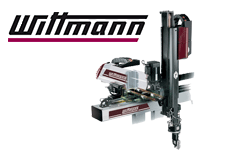Ten Reasons To Automate
- Increase Flexibility
Automation processes resolve not only your current problems, but allow you to adapt to new solutions. Robots are flexible and can easily be redeployed in new applications. It is this flexibility that can give you the edge over your competition.
- Increase Productivity and Product Yield
Automation allows you to do more with less. Well-designed automation has the ability to take up less floor space and use less resources than other processes or inefficient machinery.
- Increase Your Competitive Edge
Your competition is automating, why shouldn’t you? Besides gaining an advantage on those who have not already made the decision to automate, it is vital to your success that you keep up with the ones who already have.
- High Return on Investment
With robots being so affordable, it takes a surprisingly short time for them to pay for themselves, sometimes even less than a year.
- Win Market Share
Your customers don’t care how it gets done. They will give the order to the company who produces the greatest yield, with the highest quality, at the lowest cost. Automation provides all of that with just one investment.
- Make Your Employees Safer
Automation is designed to do the repetitive, boring, and dangerous jobs previously done solely by human operators. Having automation perform dangerous and/or repetitive jobs reduces the potential for accidents and compensation claims caused by operator fatigue and/or distraction.
- More Affordable Than You Might Think
As technology continues to become less expensive, so too does automation.
- Cost Reduction
Every business wants to improve it’s bottom line. Automation ultimately results in lowering operating costs and improving the bottom line. Machines running at maximum efficiency means lower building, energy, and labor expenses.
- Increase Quality and Consistency
One way automation reduces your costs is through minimizing waste of defective products. Automation makes processes highly standardized and cuts the variability that comes with human-oriented tasks. Using inspection tools , you can easily determine a defected part versus a good part.
- Become Sustainable
Automation uses far less energy than previous processes. First, by minimizing defects, the machine does not have to produce more parts than necessary. Beyond reducing waste, the increased throughput also allows the machine to operate for less time, saving energy.
Back to top



